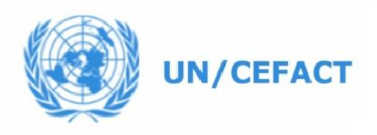 The United Nations, in 1996, established the United Nations Centre for Trade Facilitation and Electronic Business (UN/CEFACT).
The United Nations, in 1996, established the United Nations Centre for Trade Facilitation and Electronic Business (UN/CEFACT). UN/CEFACT was mandated to find ways to improve global coordination and cooperation in trade facilitation and electronic business standards.
Its main priority continues to encourage interoperability: simplifying the exchange of information up and down the supply chain, including commercial and governmental processes. TradeLens has tried to digitise the written standards that UN/CEFACT created, as it has striven to harness Blockchain technology to bring greater traceability and transparency to international shipping of goods. It processes over 10 million shipping events on a weekly basis.
The challenges of interoperability are considerable for those involved in global logistics when different players in a supply chain cannot agree on different definitions. An example of this is when shippers, carriers, and customs authorities continue to rely on paper documents simply because their computers can’t talk to each other! Having agreed standards and definitions enables humans and computers to operate on “the same page”, to help improve the efficiency of container shipping, global trade, and world economies.
French shipping firm, CMA CGM Group, and the Swiss shipping line, MSC Mediterranean Shipping Company (MSC), have recently announced that they are joining TradeLens’ Blockchain-powered shipping platform to help improve their supply chain logistics.“Digital collaboration is key to the evolution of the container shipping industry. The TradeLens platform has enormous potential to spur the industry to digitize the supply chain and build collaboration around common standards,” reported André Simha, Chief Digital & Information Officer, MSC.
TradeLens has been developed by AP Moller Maersk and IBM, using IBM’s Blockchain expertise. Maersk was established in 1906 and is one of the world’s largest shipping firms. This is another interesting example of “collaborative capitalism” - one company develops a Blockchain platform and then allows what have historically been its competitors to use the same platform.
Tradelens now has over 100 companies using its platform, giving shippers, carriers, freight forwarders, customs officials, port authorities, inland transportation providers, and others a complete view of their respective data. It also allows participants to digitally collaborate as cargo moves around the world. The platform aims to improve the efficiency and trust across the global supply chains, to make them more transparent and secure in order to foster greater collaboration.
As with a number of examples where Blockchain technology is increasingly being used, the end customer will not be aware, nor do they need to know anything about the technology that is being harnessed by multinational organisations to improve business’ efficiency.
TradeLens is also a good example illustrating how Blockchains can be used to handle large amounts of data globally by many different independent parties, who in the past have had very little co-operation between them since they are often in competition with each other.


